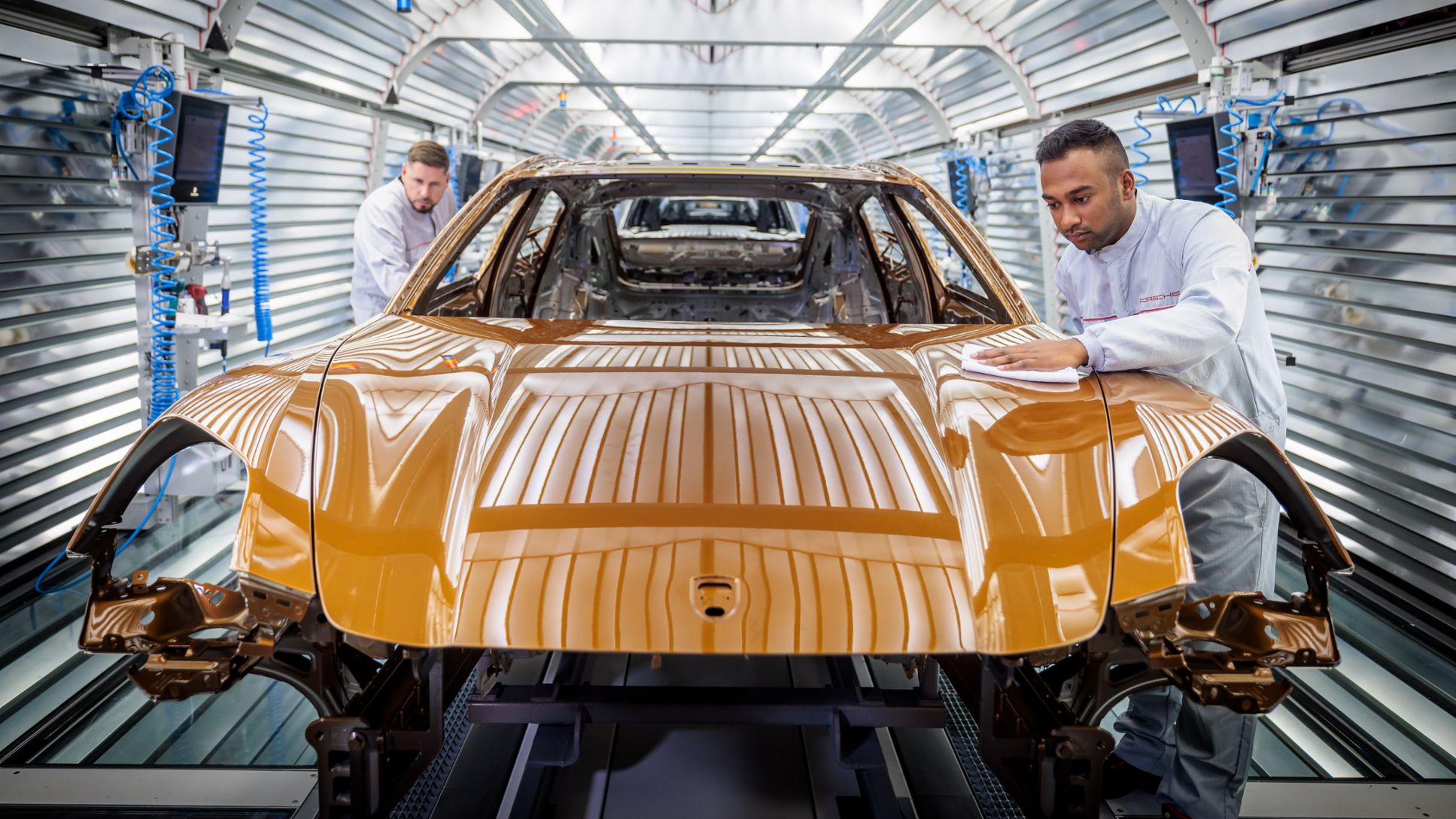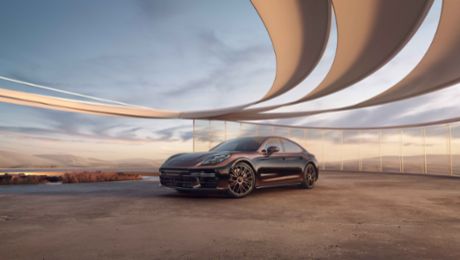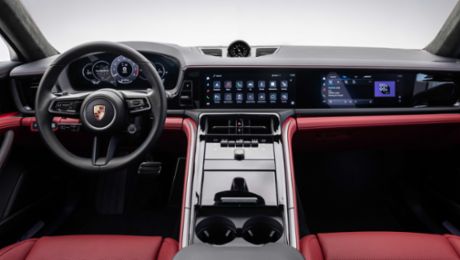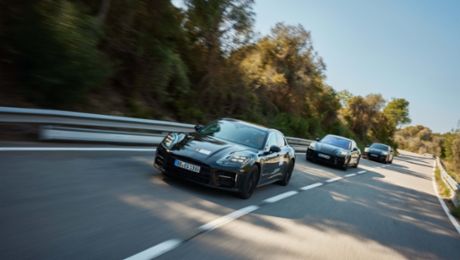The sports car manufacturer also restructured the range of series, metallic and special colours across all model series. The new categories: Contrasts, Shades, Dreams and Legends. These reflect a variety of topics, and their emotional labels make it easier for the customer to choose a colour.
Whether with signal colours in the 1970s or pastel tones two decades later, Porsche was always daring in creating a varied, multi-faceted colour range. The latest proof is to be found in the exciting exterior colours of the Panamera: Madeira Gold Metallic, for example, is a warm, cognac-hued colour tone that evokes a golden autumn. Subtle effect pigments create a metallic brilliance and underline the overall effect of high performance and elegance.
Four colour categories from classic to expressive
Porsche has also revised and emotionalised the colour scheme for all model series. Contrasts, Shades, Dreams and Legends are the names of the new categories for series, metallic and special colours.
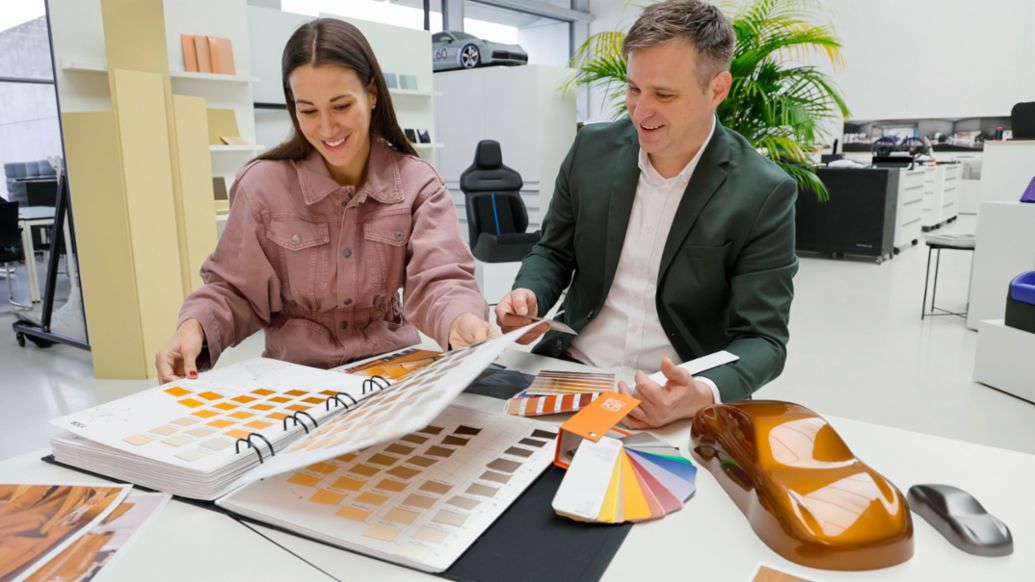
Contrasts comprises particularly classic and timeless colours. Black and white, for example, create maximum contrast. On the other hand, various shadings of white, grey and black fall into the Shades category, which also includes silver tones such as the new Ice Grey Metallic of the Panamera. The discreet nuances facilitate a state-of-the-art personalisation of the dream sports car.
With the strong, bright, striking colours in the Dreams category, customers can express their individuality and make a statement. New Dreams paints for the Panamera include Lugano Blue and Madeira Gold Metallic. The Legends category brings together unusual colours with a certain special something. The tones from a range of colour fields are elegant, modern and timeless. Examples from the Panamera colour range: Montego Blue Metallic, Oak Green Metallic Neo and Slate Grey Neo.
Alongside the series colour programme, Porsche offers even more individualised paints with ‘Paint to Sample’ and “Paint to Sample Plus’. With ‘Paint to Sample’, the focus is on the availability of classic Porsche colours recognisable from the company’s history. At present, the range across all model series comprises more than 170 colours. ‘Paint to Sample Plus’ also offers the option to create totally individual colours based on customer specifications.
A creative and development process over several years
Between the initial idea and the availability to customers, several years passed at Porsche. The creative process and the technical development, which includes quality assurance, are time-consuming. These lengthy procedures mean that the experts at Style Porsche always have to be ahead of their time. “A new colour has to be more than just a trend – it has to establish itself over a longer period,” emphasises Volker Müller, Head of Colour & Trim at Style Porsche. “We therefore have to identify trends early and sometimes set these trends ourselves.”
A wide range of ideas and suggestions
Fashion, architecture and interior design are important sources of inspiration for all designers. According to Volker Müller, when a colour has established itself in people’s eyes, it also works for very long-lasting products such as sports cars. The history of the brand also offers a wide range of suggestions. Madeira Gold Metallic, for example, is a state-of-the-art, elegant interpretation of Nordic Gold Metallic. This colour was available for various model series from 2007 to 2010.
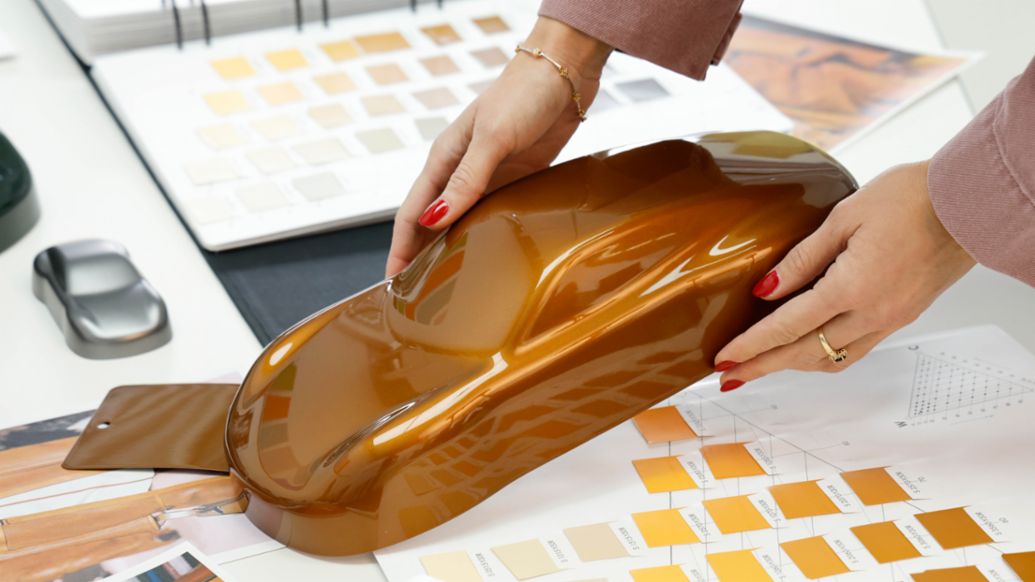
“We actually have it easy, because every colour looks good on a Porsche,” smiles Daniela Milošević, Colour & Trim Designer at Style Porsche. A selection process is conducted nonetheless. From the approximately 12 to 15 new colours designed by the team every year, the overall Executive Board chooses the colours to be developed further. If these paints prove to be technically feasible, they go into series production in the following three years.
From the colour idea to the paint
First, the designers analyse the current colour range and see if all the colour areas are well represented. During the research for new colour topics, so-called mood boards are created – visual representations of concepts and visions. The tools used here include an internal workshop among the designers in which new colour and material topics are discussed and new ideas created.
When the new colour visions have been created, the suppliers enter the picture: “We present our colour ideas to the paint suppliers and discuss them topic by topic. It’s a fruitful discussion because even more wonderful ideas emerge during this creative process,” says Milošević. “The suppliers work out the new colours for us using a range of colour pigments,” explains Müller. Specifically, this leads to different interpretations of a colour and multiple colour tone creations. A wider group of Porsche experts from production, technical development, design, sales and marketing discusses these paint samples.
.jpg/jcr:content/Tests%20im%20Lacklabor%20(2).jpg)
The colour ideas must be technically feasible and correspond to the demands of the markets. These differ from market to market: “Our Asian customers tend to be daring in their choice of colour, while customers in the US prefer more sober tones,” says Milošević.
For the initial selection, the designers also bear in mind the future interior materials. An exterior colour must also be in harmony with the interior, and has to go well with leather, Race-Tex and other fabrics.
From the ‘color frog’ to the power wall
The next step involves painting so-called ‘color frogs’ in the respective colours. These are miniature cars in the form of a current 911 that enable the effect of the colours on a larger 3D body to be assessed. At the same time, the virtual reality experts at Porsche scan the paint sample in order to visualise the new colour photo-realistically on a 16-metre-wide LED screen. The exterior colours of new model series or derivatives can then be changed at the push of a button.
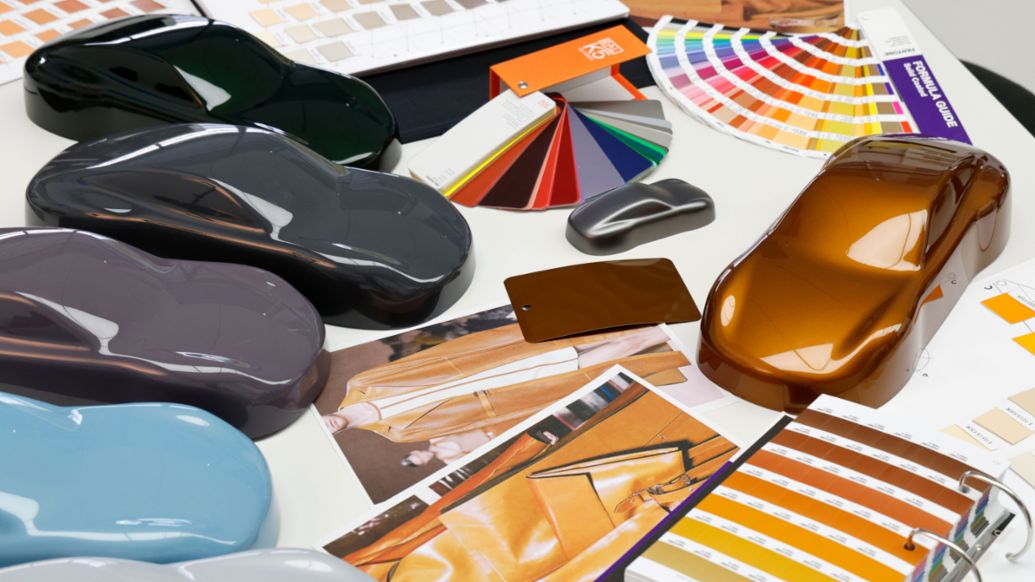
The final decision on whether to run with a new colour idea or not falls to the overall Executive Board. A painted car is presented for each colour. The top management of Porsche evaluates the cars both in daylight and visualised digitally on various derivatives on the LED screen in the studio’s own presentation hall.
The body and add-on part colours must be in harmony
In the next step for a future series colour, a medium-sized paint batch of around 50 to 100 kilograms is produced. This is used to paint around 300 steel plates. These so-called original samples are also used as colour references for the suppliers of the add-on parts. Known as colour matching, this is an important quality feature of a Porsche. Even though colours behave fundamentally differently on metal and plastic, they must match each other perfectly on the car.
Comprehensive tests and safeguards
At Porsche, the development process does not end with the creative phase. For example, the paint experts at the sports car manufacturer test the repair configuration. This includes checking the feasibility of a so-called spot repair based on one of the painted pre-production cars. Around one year before the start of series production, a so-called field test is also carried out.
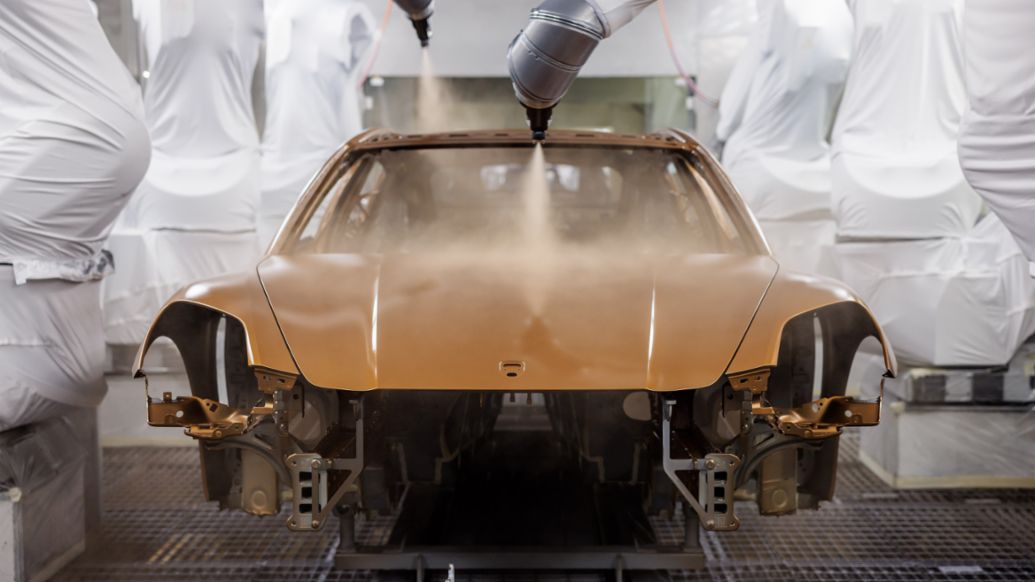
During the painting process in the Porsche factories, the paint is pumped through hoses from the tank to the atomisers. “Shear forces in the ring-shaped hoses could cause colour deviations,” says Bernd Mieskes, Colour Development Team Leader. The dress rehearsal before the start of series production is supposed to prevent such unwelcome surprises. It is also necessary to consider the precise painting conditions in the individual production plants. “In the individual factories we have different numbers of painting robots, different cycle times, hose lengths and system volumes,” Mieskes explains. “For this reason, we have to modify the paint for the specific conditions of a factory.”
Further tests are performed before the customer can select the colour in the Car Configurator or at the Porsche Centre. In the so-called Weather-o-Meter, the sample plates are irradiated with strong UV light for 3,200 hours. Theoretically, this corresponds to one year of direct sunlight in Florida and proves the durability of the paint. The testing process also includes fire protection, stone impact and salt water tests.
